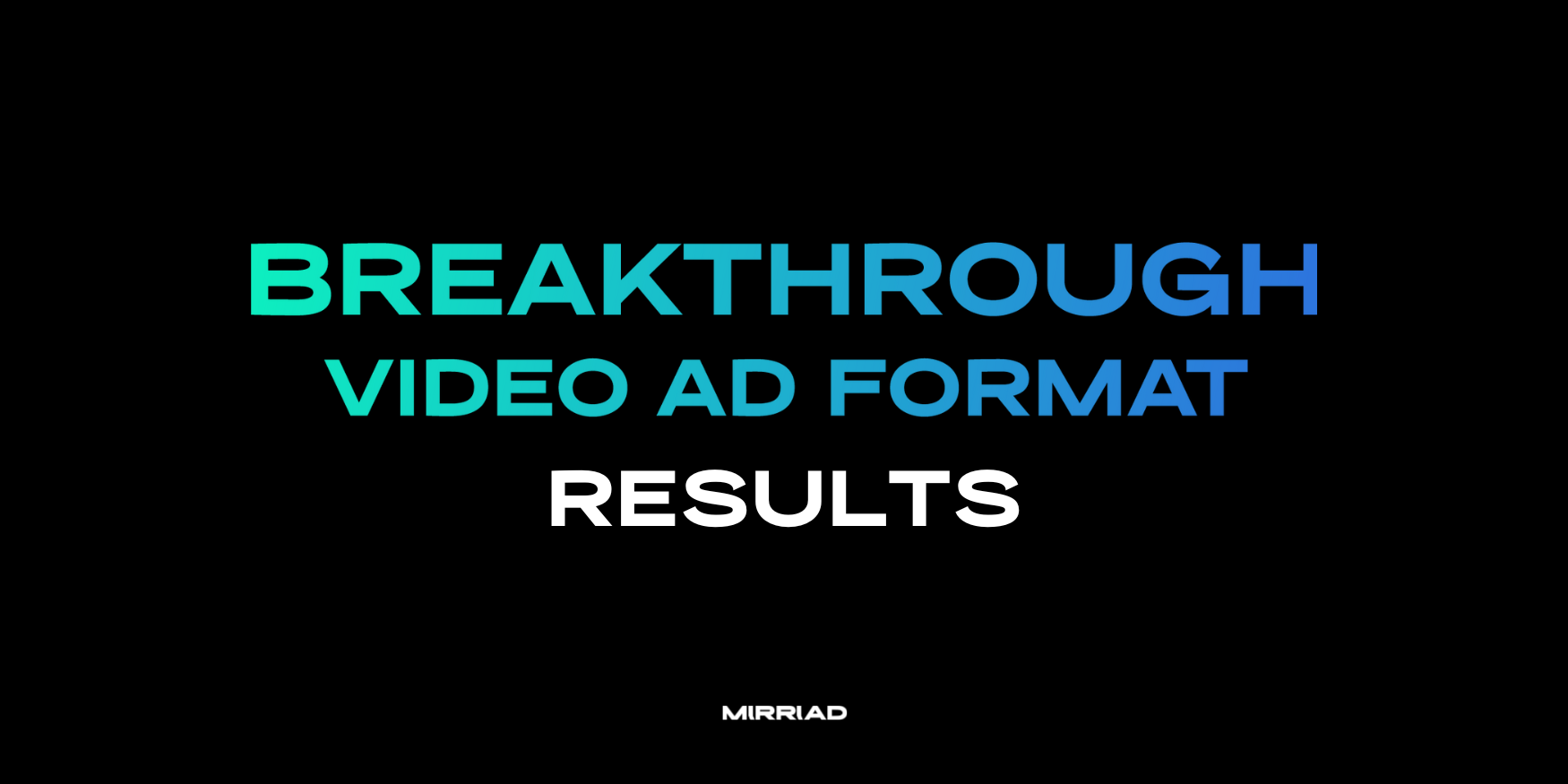In-content advertising is a new and powerful way to strengthen and accelerate advertising campaigns. While many brands are struggling with a saturated media landscape and overwhelmed consumers who have literally seen it all, in-content advertising provides a unique and positive viewing experience, making advertising campaigns feel fresh, relatable, and relevant.
Mirriad and Kantar have conducted extensive and groundbreaking new research that carefully analyzes the effectiveness of in-content advertising. These findings have recently been published in their joint Whitepaper - PLACING THE FUTURE: A deep dive into the effectiveness of virtual in-content advertising validated through new bespoke research methods. Some of the key findings that illustrate just how successful in-content advertising can be in connecting with audiences and consumers have been previously discussed in this article.
For example, in-content advertising can increase audience size to up to 49% when compared to traditional TV spots - which translated into a real-world increase in sales - representing an enormous opportunity.
THE FUTURE OF ADVERTISING - COMING TO A SCREEN NEAR YOU
In-content advertising is the use of innovative technology to virtually placed products, signage, and video in video directly into digital content in the post-production phase. Consumers spend large amounts of time immersed in an on-screen world, and savvy, imaginative brands can find a way into that world in order to connect directly with customers in this environment. The basic concept is simple – place your brand into the content that masses of viewers engage with every day and become a part of the entertainment experience. Through advances in technology and access to powerful artificial intelligence, the scope of in-content advertising is vast, offering flexibility, scalability, and creative control.
There has also been an overwhelming positive response by consumers towards in-content advertising: The Kantar and Mirriad Whitepaper found that viewers were seven times more likely to prefer in-content advertisements to TV spots, and audiences reported higher brand recall with in-content formats.
“Virtual in-content ads offer brands a unique new opportunity in the media landscape. Seamless integration into familiar content ensures high consumer receptivity and acceptance, while also being highly noticeable and impactful. Advertisers should be piloting now and using our established research framework to measure which placements work best for their brands.” - Duncan Southgate, Senior Director, Creative & Media Solutions, Client Services, Kantar
When planning an in-content advertising campaign, there are a variety of creative factors that need to be considered to make the maximum impact. Kantar and Mirriad have consolidated the results from 20 studies in their Whitepaper and distilled some best practices for creating in-content advertising:
1. MAKE IT FEEL EFFORTLESS
In-content advertising offers an unprecedented opportunity to connect with audiences in an authentic way. With digital content inundating viewers from all angles, many people have turned to ad-blockers, ad-free streamed video-on-demand services, or simply hitting the mute button to avoid advertising content.
As highlighted by a recent Whitepaper published by Mirriad, 61% of viewers worldwide have said that they skip TV ads, and there is a ten percent increase, year on year, of the use of streaming video-on-demand in the US. The Interactive Advertising Bureau has conducted a number of studies across the world that demonstrate the increased use of ad blockers.
In the US, more than a quarter of all consumers use an ad blocker. In-content advertisements can bypass the blockage by directly placing brands into scenes from movies, television shows, or even music videos. The viewer is attentive and already emotionally engaged with their chosen content and, if the advertising content is carefully considered and placed so that it does not disrupt the flow of the story, the ad becomes part of the experience, rather than a disruption.
2. FIND THE RIGHT FORMAT
In-content advertising is not limited to virtual product placement, although inserting products in post-production is an intelligent and efficient method of inserting a chosen product into media content. Through advances in technology, a number of other creative formats, such as signage, billboards and even video can be incorporated into the scene of choice. An outdoor scene in a movie might feature a branded billboard, for example, or a television advertisement could be shown on a background TV screen. Through the strategic use of artificial intelligence technology, it is possible to analyze video content to find exactly the right moment to incorporate selected advertising content, or to pick a format that resonates best with viewers.
.jpg?width=2162&height=1080&name=Location%2c%20Location%2c%20Location_Scene54_Side%20by%20Side_Static_Mock_Up_1750x875%20(1).jpg)
Choosing the right form of media in which to place an in-content advertisement is also critical – given that 26% of consumers find cinema to be the most innovative media channel, this represents an opening for brands to cut across the clutter and pioneer a new way of reaching consumers.
3. CONTEXT IS KEY
Any seasoned marketer knows that there is no one-size-fits-all approach to advertising. Carefully tailoring advertising messages and formats according to the audience is critical to success. In-content advertising technology is highly adaptable and responsive and can be modified to suit age, geographical location, or any number of target demographics. The same show can feature a different brand or product placed in the same scene, or similar content can be called across multiple programs for consistency - depending on the context and desired message. This ability to customize and curate messages for specific audiences makes a stronger impression on viewers, building trust, relevance, and emotional resonance.
4. GET CREATIVE WITH COMBINATIONS
Something else uncovered by the Kantar and Mirriad Whitepaper (LINK) is that audiences responded well when in-content advertising was coordinated with TV spot campaigns, or two complementary brands were placed together. For example, combining in-content advertising with coordinated TV spot campaigns boosted brand awareness by 2 ppts , increased favorability and consideration by 5 ppts and grew ad awareness by 10 ppts .
Additionally, the placement of two complementary brands within the same scene resulted in an increase in ad awareness, brand appeal, and purchase intent, when compared to singular placements. This suggests that in-content advertising can play a starring role in a larger, long term and layered brand strategy.
5. WORK WITH THE BEST
Audiences respond to quality content and eye-catching visuals, and when it comes to working with cutting-edge technology, it makes sense to work with leaders in the field. Part of the appeal of in-content advertising is that it feels seamless and smooth – which means not sacrificing quality. Reach out to the experts that can help create and place quality content within premium programming. Mirriad is the world’s leading in-content advertising solution with over 35 patents working with a large roster of global brands and content partners.
Learn more about the evidence-based creative best practices to consider when designing an in-content advertising campaign by downloading the Kantar and Mirriad Whitepaper.
.jpg?width=900&name=Kany%20Garcia_Lexus_Side%20by%20Side_Static_Mock_Up_1750x875%20(1).jpg)


.png)